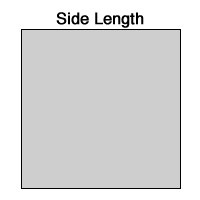Understanding volume is crucial in various projects, from landscaping your garden to undertaking construction work. When dealing with materials like soil, mulch, gravel, or concrete, measurements are often given in cubic yards or cubic feet. So, the fundamental question arises: how many cubic feet are in a cubic yard? This article will break down this essential conversion, explain why it matters, and provide you with the knowledge to confidently calculate volume for any project.
Decoding Cubic Feet: A Unit of Volume
A cubic foot is a standard unit of volume in the imperial and United States customary systems of measurement. Imagine a cube that is one foot long, one foot wide, and one foot high. The space this cube occupies is one cubic foot. It’s a common unit for measuring smaller volumes, and you’ll often see it used for items like boxes, appliance capacities, or smaller quantities of landscaping materials.
Understanding Cubic Yards: A Larger Volume Measurement
Now, let’s picture a cubic yard. Similar to a cubic foot, a cubic yard is also a cube, but significantly larger. A cubic yard is a cube that measures one yard in length, one yard in width, and one yard in height. Since a yard is equal to three feet, a cubic yard is substantially bigger than a cubic foot. Cubic yards are typically used for larger volumes, such as amounts of concrete needed for a driveway, or quantities of topsoil for a garden renovation.
The Magic Number: Cubic Feet to Cubic Yard Conversion
Here’s the core of the conversion: There are 27 cubic feet in 1 cubic yard.
This conversion factor is derived directly from the relationship between feet and yards. Since 1 yard equals 3 feet, to find out how many cubic feet are in a cubic yard, you need to cube the conversion factor:
3 feet (length) x 3 feet (width) x 3 feet (height) = 27 cubic feet
Therefore, one cubic yard is equivalent to 27 cubic feet. Understanding this relationship is essential for accurate material calculations and cost estimations.
Why is Knowing the Cubic Feet to Cubic Yard Conversion Important?
This conversion isn’t just a mathematical exercise; it has practical implications in numerous real-world scenarios:
- Landscaping Projects: When ordering mulch, topsoil, or gravel for your garden or yard, these materials are often sold by the cubic yard. Knowing how many cubic feet are in a cubic yard allows you to calculate the amount needed based on your area’s dimensions in feet and depth in inches, preventing over or under ordering.
- Construction and Concrete Work: Concrete, sand, and gravel for construction are frequently measured in cubic yards. Accurate conversion ensures you order the correct volume for foundations, walkways, or other concrete structures, minimizing waste and saving money.
- DIY Home Improvement: For various DIY projects, from building raised garden beds to pouring small concrete pads, understanding cubic yard to cubic feet conversion is crucial for material estimation and project planning.
- Cost Calculation: Materials sold by the cubic yard often have a different price point than those sold by the cubic foot. Being able to convert between these units enables you to compare prices effectively and make informed purchasing decisions.
Step-by-Step Guide: Calculating Cubic Yards
Let’s walk through how to calculate cubic yards, starting with measurements in feet and inches, which is a common scenario for DIYers and homeowners:
-
Measure Your Area: Measure the length and width of the area you need to fill in feet. For depth, measure in inches as it’s often a smaller dimension (e.g., depth of mulch).
-
Convert Inches to Feet (if necessary): If your depth measurement is in inches, convert it to feet by dividing by 12 (since there are 12 inches in a foot). For example, 6 inches is 6/12 = 0.5 feet.
-
Calculate Volume in Cubic Feet: Multiply the length (in feet) by the width (in feet) by the depth (in feet) to get the volume in cubic feet.
Volume (cubic feet) = Length (feet) x Width (feet) x Depth (feet)
-
Convert Cubic Feet to Cubic Yards: Divide the volume in cubic feet by 27 to convert it to cubic yards.
Volume (cubic yards) = Volume (cubic feet) / 27
This final number is the cubic yard volume you need for your project.
Cubic Yard Formulas for Different Shapes
To further assist with your calculations, here are formulas for calculating cubic yards for various common shapes, assuming measurements are taken in feet:
Square Area
- Area (square feet): Side Length x Side Length = (Side Length)²
- Volume (cubic feet): Depth x Area
- Volume (cubic yards): Volume (cubic feet) / 27
Rectangle Area
- Area (square feet): Length x Width
- Volume (cubic feet): Depth x Area
- Volume (cubic yards): Volume (cubic feet) / 27
Rectangle Border Area
- Inner Area (square feet): Length x Width
- Total Area (square feet): (Length + (2 x Border Width)) x (Width + (2 x Border Width))
- Area (square feet) of Border: Total Area – Inner Area
- Volume (cubic feet): Depth x Area of Border
- Volume (cubic yards): Volume (cubic feet) / 27
Circle Area
- Area (square feet): Pi x (Diameter/2)² (where Pi ≈ 3.14)
- Volume (cubic feet): Depth x Area
- Volume (cubic yards): Volume (cubic feet) / 27
Circle Border Area
- Outer Diameter: Inner Diameter + (2 x Border Width)
- Outer Area (square feet): Pi x (Outer Diameter/2)²
- Inner Area (square feet): Pi x (Inner Diameter/2)²
- Area (square feet) of Border: Outer Area – Inner Area
- Volume (cubic feet): Depth x Area of Border
- Volume (cubic yards): Volume (cubic feet) / 27
Annulus Area
- Outer Area (square feet): Pi x (Outer Diameter/2)²
- Inner Area (square feet): Pi x (Inner Diameter/2)²
- Area (square feet) of Annulus: Outer Area – Inner Area
- Volume (cubic feet): Depth x Area of Annulus
- Volume (cubic yards): Volume (cubic feet) / 27
(Note: Circle Border and Annulus refer to the same shape, just described with slightly different terminology.)
Triangle Area
- Area (square feet): (1/4) x √[ (a+b+c) x (b+c-a) x (c+a-b) x (a+b-c) ] (where a, b, c are the lengths of the sides of the triangle)
- Volume (cubic feet): Depth x Area
- Volume (cubic yards): Volume (cubic feet) / 27
Trapezoid Area
- Area (square feet): ((a + b) / 2 ) x h (where a and b are the lengths of the parallel sides, and h is the height)
- Volume (cubic feet): Depth x Area
- Volume (cubic yards): Volume (cubic feet) / 27
Conclusion: 27 Cubic Feet in a Cubic Yard – Your Volume Conversion Key
Knowing that there are 27 cubic feet in a cubic yard is fundamental for anyone working with volume measurements in landscaping, construction, or DIY projects. By understanding this conversion and applying the formulas provided, you can accurately calculate material needs, estimate costs, and ensure your projects are completed efficiently and effectively. Whether you’re spreading mulch in your garden or pouring concrete for a new patio, mastering this volume conversion will save you time, money, and potential headaches.

